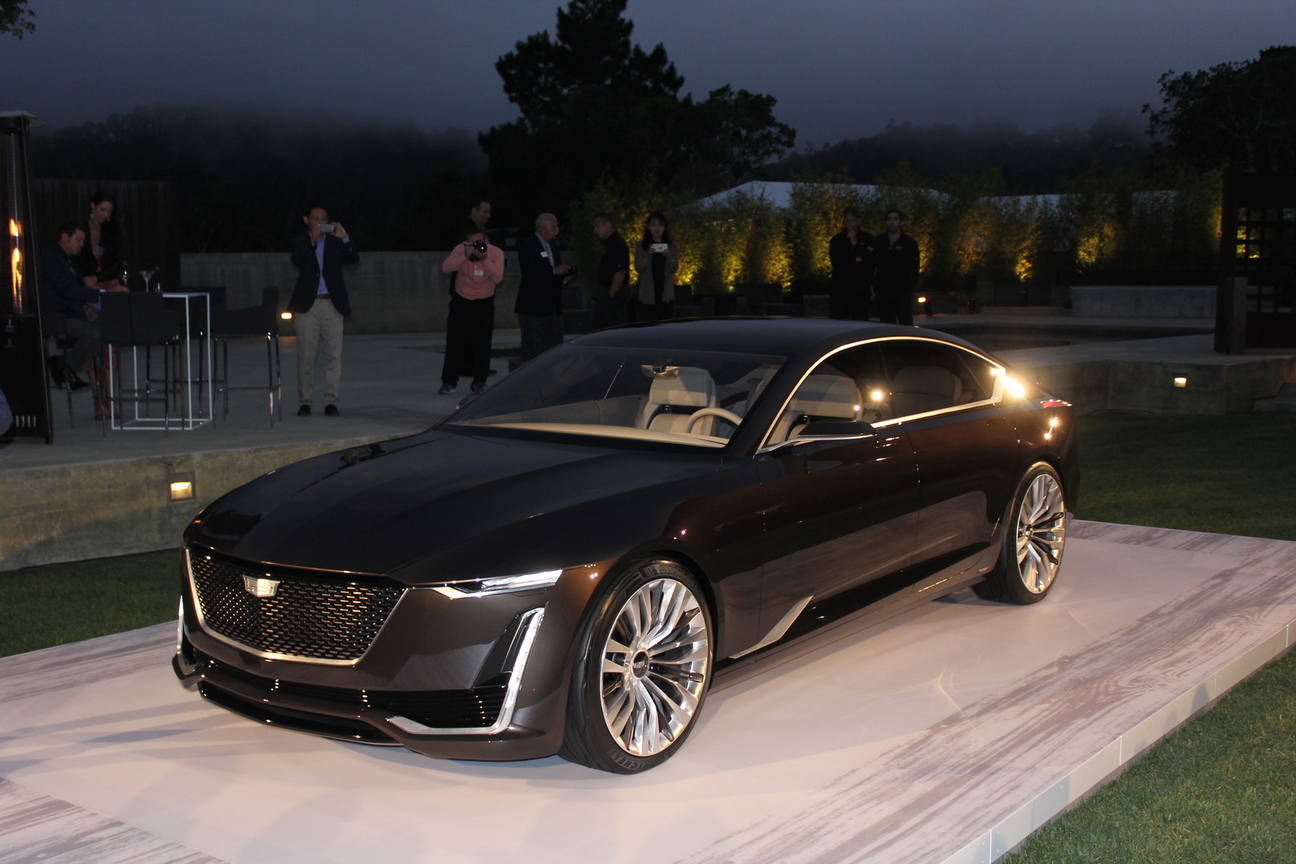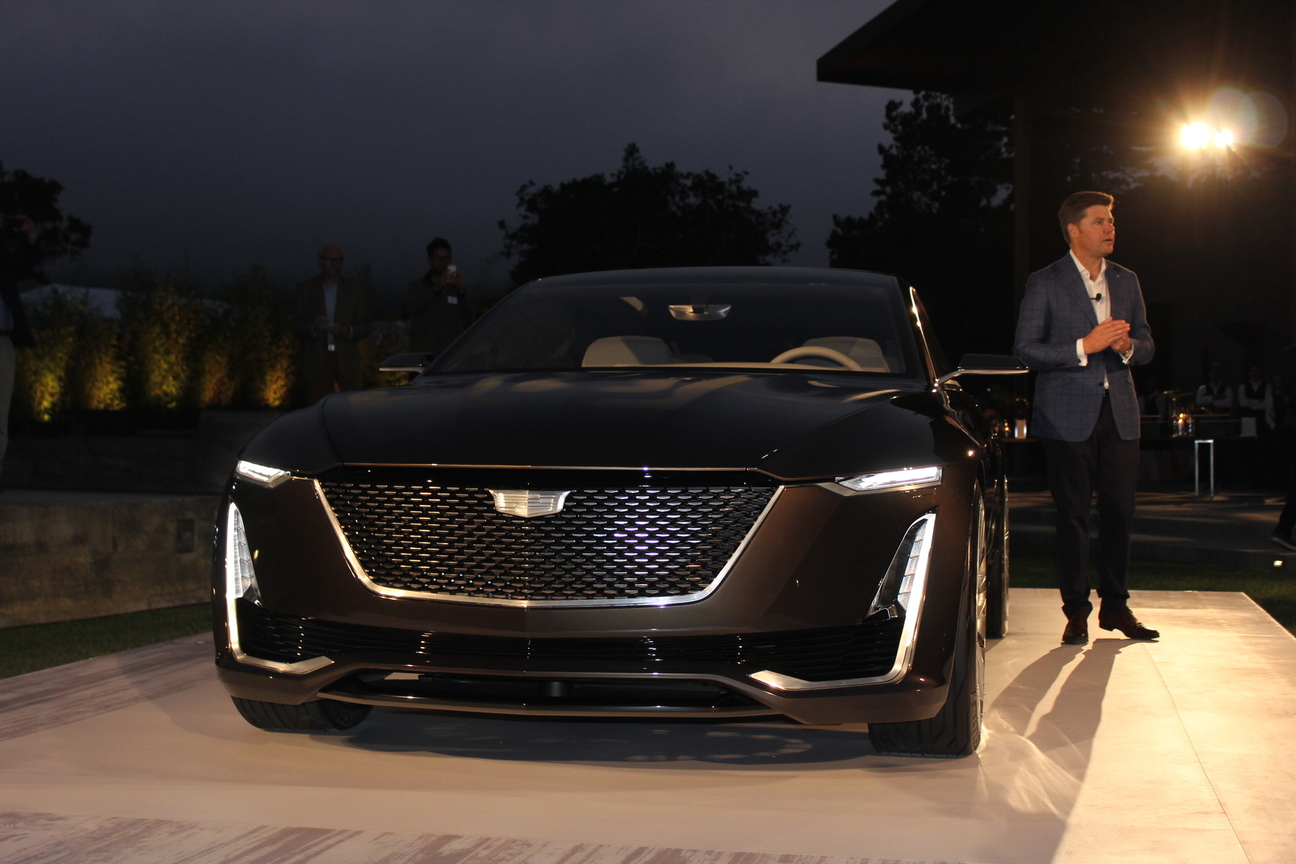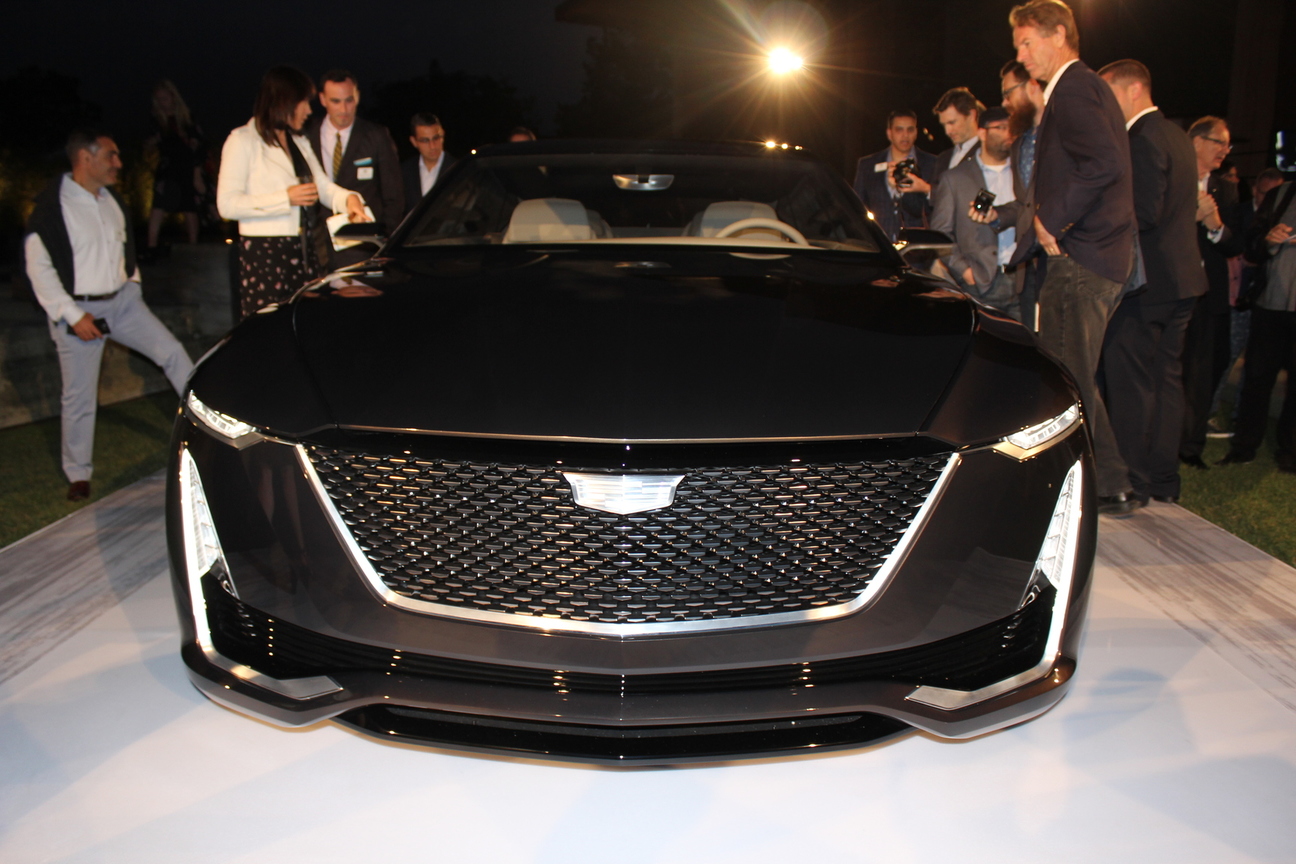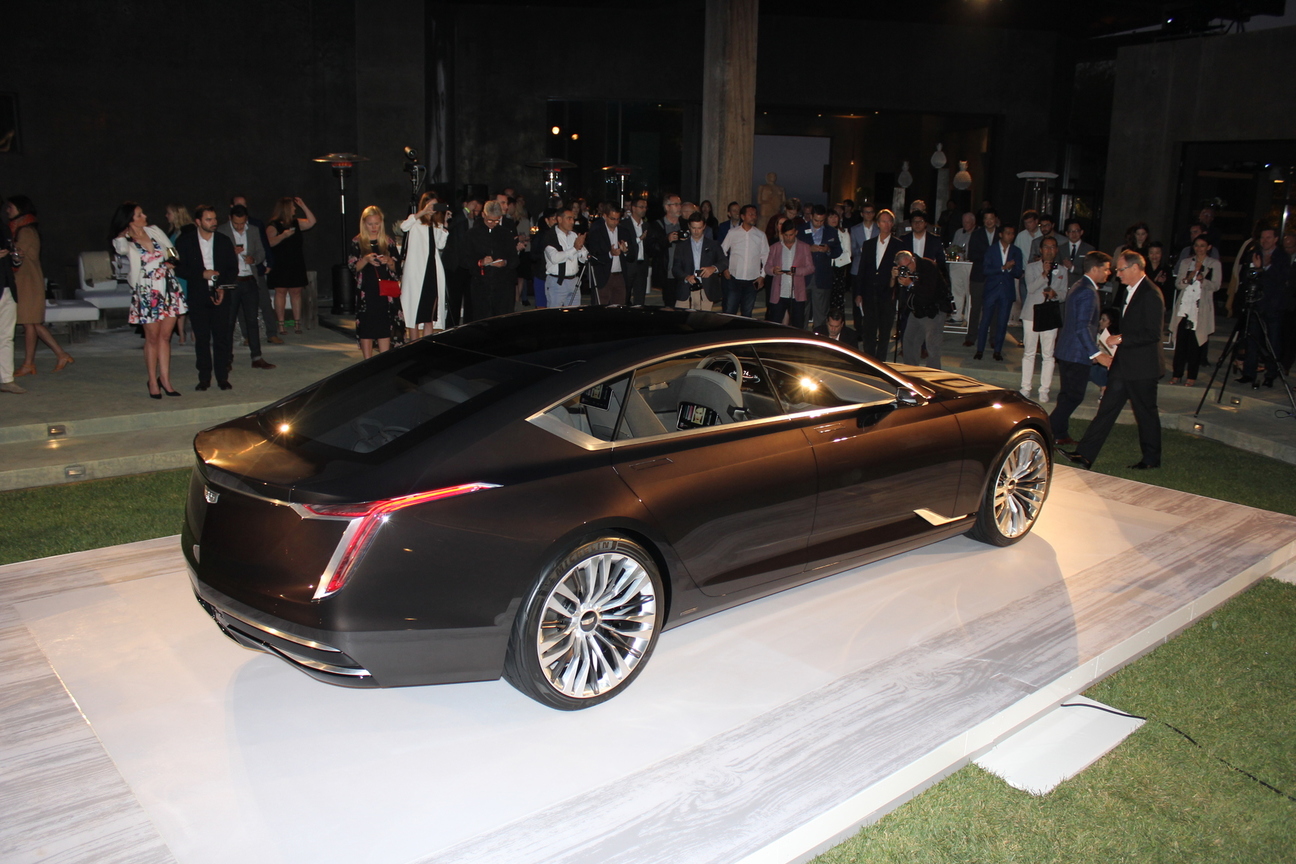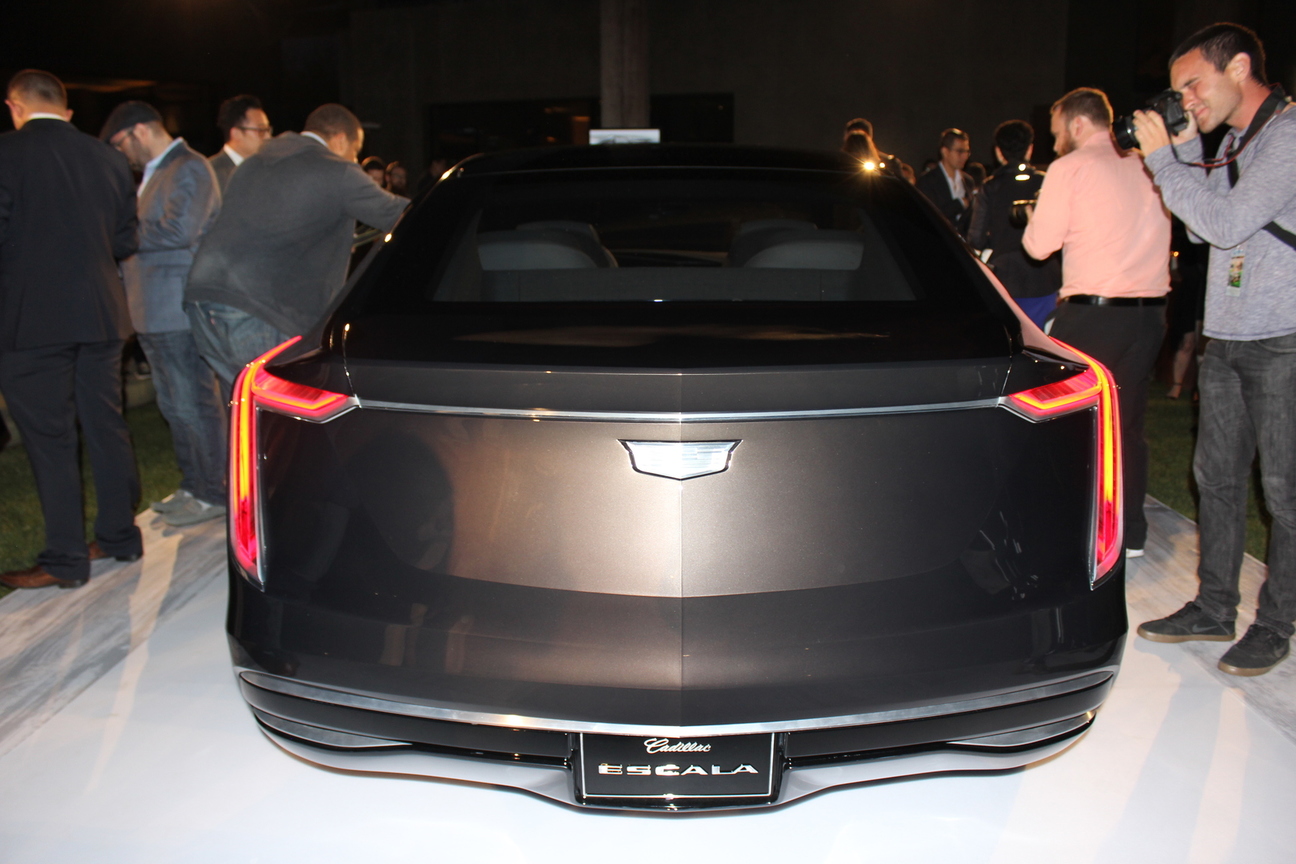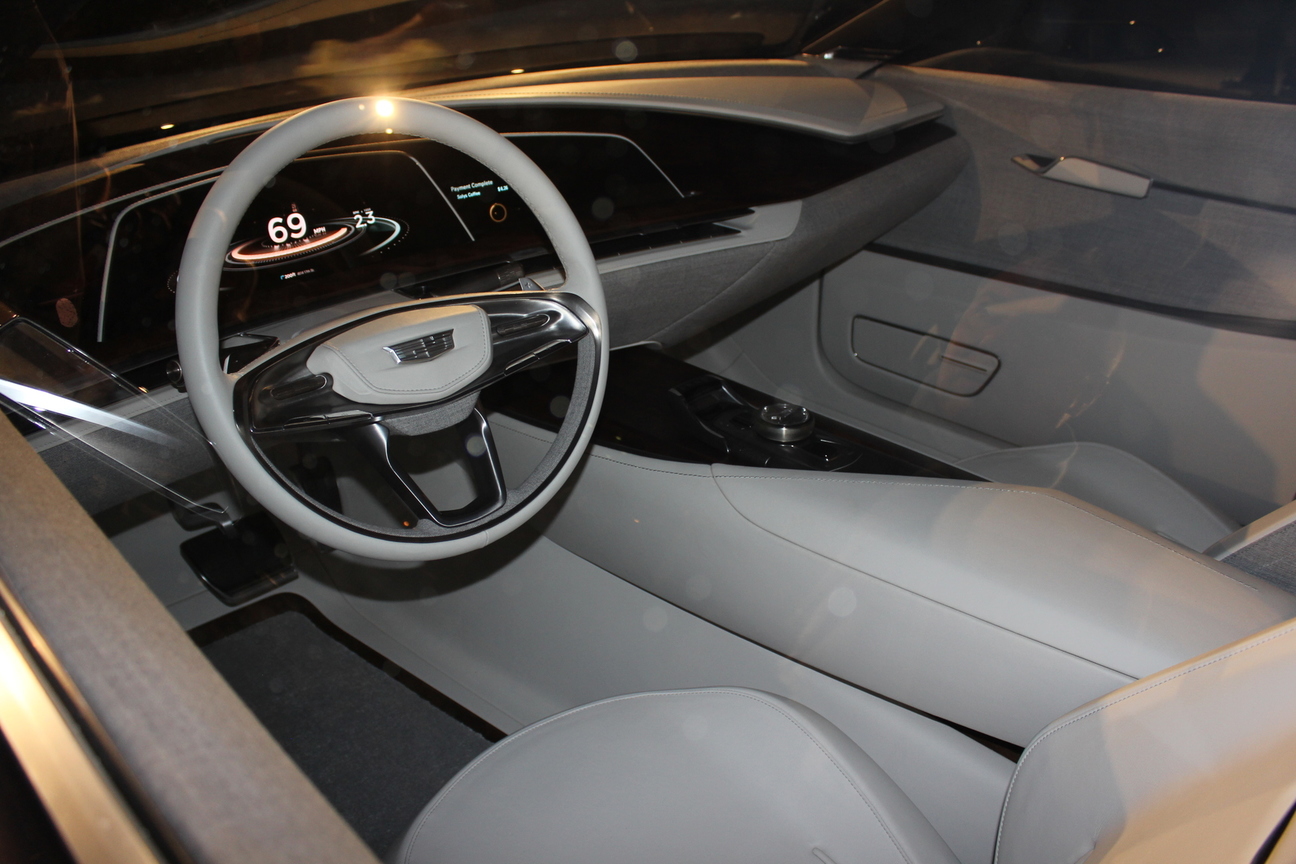Cadillac’s fleet of luxury cars is more than capable of taking the fight to the German establishment, but it still needs a flagship. Over the past few years, Cadillac has used the annual Pebble Beach Concours d’Elegance to preview such a car with various concepts, including the Ciel convertible and Elmiraj coupe. Now, it’s back with another one.
Debuting at the 2016 Pebble Beach Concours d’Elegance, Cadillac says the Escala represents what a possible flagship model “larger, more elite, and expressive” than the recently-launched CT6 could look like. The CT6 is Cadillac’s most luxurious sedan, but it’s not quite in the same league as the Mercedes-Benz S-Class and other German luxury liners.
Cadillac says the Escala (the name is Spanish for “scale”) also previews design language and technology currently under development. The styling has the same sharp edges seen on current Cadillacs, but is much more restrained. There’s less chrome, and the headlights and jowl-like daytime running lights have been slimmed down significantly. At 210.5 inches long, the four-door Escala is about 6 inches longer than a CT6.
A 4.2-liter twin-turbocharged V8 drives the rear wheels. Cadillac says this engine may be used in future production models, but won’t say how much power it produces in the Escala. The V8 has cylinder deactivation, which shuts down four cylinders under light loads to save fuel. The Escala also shares the CT6’s basic platform, which uses a mix of high-strength steel and aluminum to cut weight.
The interior was designed to have “dual personalities,” according to Cadillac, with the front emphasizing tech and the rear emphasizing “relaxation,” acting as an oasis for chauffeured passengers. The driver makes use of three curved OLED screens, which consolidate the functions of the traditional gauge cluster and center-stack screen. To help manage all of those screens and the many infotainment features they enable, Cadillac equipped the Escala with voice and gesture controls.
Read more: Nothing about Mercedes’ latest Maybach concept is subtle
While the Escala itself likely won’t go into production, some of its styling elements and technology might, according to Cadillac. As with the General Motors’ luxury brand’s previous Pebble Beach concepts, the question remains whether the Escala will foreshadow a production full-size flagship sedan, or will remain nothing more than a pretty show car.
